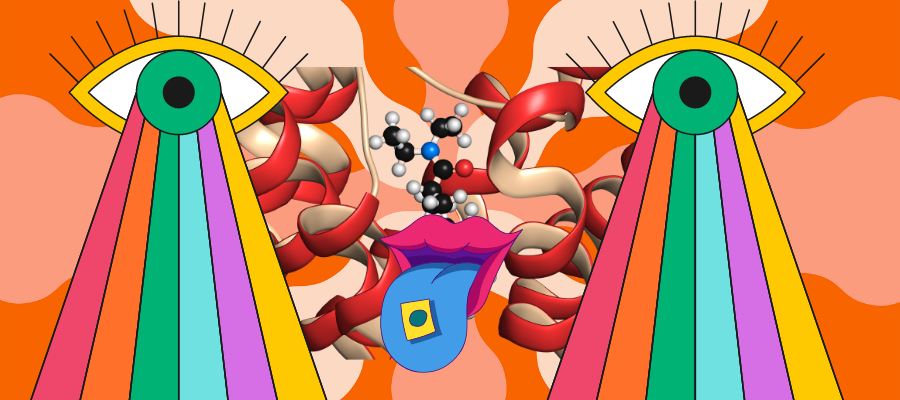What do crystal LSD and human serotonin receptors have in common? A lot more than you might think! In this blog post, we will take a look at the crystal structure of LSD and how it interacts with human serotonin receptors. Stay tuned to learn more!
TL;DR
- Crystal LSD structure, on a molecular level, shows that it binds almost perfectly with the serotonin receptor ✨
- This explains why acid causes euphoria ✨
- More research on the topic is being conducted ✨
About Crystal LSD Structure

LSD, or lysergic acid diethylamide, is a psychoactive drug that was developed in the 1950s. Its effects on humans have been studied extensively over the years. It is most commonly used as a potent hallucinogenic drug thanks to its potency and efficacy.
The chemical structure of LSD has an interesting crystal formation when viewed under a microscope. The crystal LSD molecule is made up of four rings, called a tetrahedron, and is composed of different atoms in various proportions.
How Does LSD Interact With Serotonin?
The way crystal LSD structure interacts with human serotonin receptors (5-HT) has been studied for decades. Serotonin receptors are proteins on the surface of nerve cells that bind to the neurotransmitter serotonin (the chemical responsible for regulating mood and behavior). The structure of LSD bound to one of its targets allowed for the further observations.
LSD binds with the serotonin receptor in a particular way. It has been shown to bind weakly and reversibly, meaning that it doesn’t stay bound for very long. However, when it does bind, it can produce powerful psychological effects.
The crystal structure of LSD helps to explain the way it interacts with serotonin receptors. The molecule has a unique shape that allows it to fit snugly into the receptor, which is why it can produce such powerful effects when bound.
Editor’s Note
Mind you, it all happens on the molecular level, meaning the acid works on the smallest parts of what makes us humans. And the fact that it fits so perfectly makes me believe that it’s no coincidence.
Can Psychedelic Molecules Treat Depression?

The study of hallucinogens, such as LSD and psilocybin (the active ingredient in magic mushrooms), has opened up the potential for them to be used as treatments for mental health disorders, such as depression.
Studies have shown that psychedelics can help to reduce symptoms of depression by increasing levels of serotonin in the brain and influencing neural pathways in the brain. This can lead to an increase in positive emotions and a decrease in negative ones.
However, more studies need to be conducted before psychedelics can be officially recommended as treatments for mental health disorders. It’s also important to note that using LSD can lead to substance abuse and addiction.
In rare instances, LSD can even cause serotonin syndrome. A very dangerous condition.
Now you know more about the crystal LSD structure. Thanks for reading!
Similar Posts:
- LSD Symbol (LSD Molecule) – Psychedelic Drugs & Chemistry
- The Properties of Shrooms and Weed: All You Should Know About Magic Mushrooms and Cannabis
- Zoloft and Shrooms. Combining Antidepressants With Magic Mushrooms
- Abilify and LSD: What Happens If You Take Them Together? Side Effects
- Autism and LSD: How Psychedelics Work in Autistic People
- Shrooms and Antidepressants: Is Mixing Psilocybin With Other Drugs Safe?
- What Do Shrooms Do to Your Brain? Magic Mushrooms & How They Affect the Brain



